The Aurisonics Rockets was purchased by me from Hifiheadphones UK in their big clearance of Aurisonics items after it was official the Fender has now acquired Aurisonics.
At the time of this review they were available from Amazon at $249:
http://www.amazon.com/Aurisonics-Precision-Micro-Dynamic-Isolating-Headphones/dp/B00NP9ZML0
I’m not in any way affiliated with Aurisonics.

About Aurisonics:
As already mentioned Aurisonics was acquired by Fender not long ago so I won’t spend any time in telling their story here. Hopefully Fender will treat the legacy of Aurisonics with respect and I’ll get to tell their story in future reviews instead.
About me:
Built and accessories:
The Aurisonics Rocket is a dynamic micro driver IEM featuring a 5.1mm driver.
It’s been some variations on the Rockets with microphone (only KS if I understand correctly) and also a Massdrop edition with different cable (or at least a different color on the cable). The ones I’ve got is the “regular” version and it also seems to be the only one available now.
The build of the Rockets are probably the best I’ve ever seen in an IEM featuring crafted titanium housings, quad-weave aramid cable (whatever that means ), excellent ergonomics and isolation. On top of that they’re also waterproof (IP 65 rated).
), excellent ergonomics and isolation. On top of that they’re also waterproof (IP 65 rated).
The housings are very small, feel very solid and are also very lightweight and I seriously doubt that anything will go wrong with them.
The cable is Kevlar and feels very sturdy. As a matter of fact it may be too sturdy since it introduce quite a bit of microphonics when moving around with it. I’ve never been particularly sensitive to microphonics so it’s not a big deal for me but might be for others. Wearing them over the ear significantly reduces this problem. A nice feature is the red/blue stripes on the cable showing right and left side, very easy to spot to say the least.
The retail package is nice and the metal box is a nice change from the standard paper boxes. To me it also sets the standard for what the Rockets are all about: versatility and sturdiness.
The accessories pack is decent for the price and includes the following:
4 pairs of Aurisonics own Super Seal tips (S, M, M+, L)
1 set of Tri-Tab collar (the”wings” on the rocket)
1 set of Antiloops (ear hooks)
1 zipped leather pouch to store them in when not in use
The Rockets are harder than average to drive but still works fine even with my LG G3 phone.
Isolation is top notch and probably one of the best I’ve come across so far.
The Rockets also sports a stunning 5 year warranty which is pretty amazing in my book.







Blue cable on the left side and red on the right, very nice!
The specs:
Fit and ergonomics:
The very small housings on the Rockets make them a very easy fit in my experience. I’ve got narrow ear canals but these little things just slip right in.
The Rockets are very comfortable and I can use them for a long time without any fatigue. They can be worn over the ear or straight down and for me both work equally well.
I really like the Tri-Tab’s as they help both with isolation and a stable fit for me. The Antiloop’s on the other hand doesn’t work at all for me.
I'm not overly crazy about the sticky stock tips so instead I'm using them with some tips from my RHA s500's.
Sound:
I’ve used these back and forward for the last couple of weeks and they’ve played for well over 100 hours. I’ve used them both around the house and when out and about and I haven’t really found any significant weaknesses in the way they’re designed.
I’ve used them with my LG G3 phone (with and without my Elecom PAR500 BT receiver/amp), my FiiO X3/Cayin C5 combo and the CEntrance DACport Slim and they’ve worked very well with all of them. That being said I’ve got to admit that I love the sound from them when paired with the Cayin C5, excellent synergy.
Demo list:
The overall sound signature on Rockets is mid-centric, full, smooth and very non-fatiguing.
The bass is very good in quality across the board with a good balance between mid-bass and sub-bass. That being said those deepest punches are a bit rolled off. There’s no bass bleed whatsoever into higher frequencies since it’s very well controlled. The layering in the bass is also quite good. Although I find the bass sufficient for my preferences I wouldn’t recommend them to bass heads.
The midrange is most certainly the star of the show with the Rockets. It’s full, lush and liquid and it’s also what you’ll notice first when putting them in your ears. These are some of the best mids I’ve ever heard and they carry enough fullness to give male voices enough weight and an overall fantastic sound. Female voices are also full and smooth without any hint of sibilance.
The treble is also full and smooth and although extension is quite good it does roll off a bit steep in the top and I could personally have wished for a touch more sparkle. Then again by adding more energy the non-fatiguing nature of the Rockets might have been compromised so I won’t complain too loudly about it.
In addition to the amazing midrange one other thing that’s obvious pretty soon when you put these in your ears for the first time is the amazing timbre it adds to notes and vocals. Guitar sounds just crazy good with the Rockets. I’ve read some comments that call the presentation of the Rockets for two dimensional, in my opinion nothing could be more further from the way I hear them. Soundstage width is quite good but depth and layering is really great giving them a great sense of 3D presentation. Clarity and detail retrieval are about average for an IEM at this price point but in combination with the lush and laid back overall signature it’s still very impressive.
In all I find the sound from the Rockets to be very easy going and enjoyable.
Comparison:
Please note that the comments in the comparison section are not in absolute terms but in comparison between subject A and B. This means (as an example) that if subject A is found to be brighter than subject B it does not necessarily mean that subject A is bright sounding in absolute terms. I hope this makes sense.
For these comparisons I’ve used the combination of my FiiO X3 and Cayin C5.
Audio-Technica CKR9LTD’s vs Aurisonics Rockets:
The LTD’s are another smooth and intimate sounding IEM that I really like. Compared to the Rockets the LTD’s has a quite similar bass presence but sub-bass reaches a bit lower and has more impact. The bass on the LTD’s are slightly looser across the spectrum. Midrange is quite forward on both but maybe even more so on the Rockets. The Rockets actually has a fuller and lusher midrange, especially upper mids, while the LTD’s more airy sounding. The LTD’s got a good and vocal presentation but the Rockets hold their own against them. Sibilance is a non-issue with both of them. The treble on the Rockets are thicker in the same way as the upper midrange and it also feels more articulated.
I find them both very comfortable and although built is great on both the Rockets takes the lead.
The LTD’s are significantly easier to drive.
Isolation is better with the Rockets.
Havi B3Pro1 vs Aurisonics Rockets:
Those who knows me also know that the Havi B3Pro1 is one of my all-time favorite IEM’s (despite its low price) and I therefore often use them in the comparison section although they’re often much cheaper that the object they’re compared to. Compared to the Rockets the Havi’s has a bigger soundstage width and an overall thinner sound. Balance is great on both with a slight lift in the mid-bass on both of them. Bass quantity is still larger on the Rockets while quality is similar but the Havi’s actually has better extension. Midrange is the star on both and wile quite similar the Rockets are lusher and fuller. The Havi’s has better treble extension and none of them are prone to sibilance while the Rockets again has a fuller treble. Separation is slightly better on the Havi’s while the Rockets actually offer better layering and depth. Clarity and detail are quite similar on both with the Rockets pulling slightly ahead.
I find the Rockes to be more comfortable and also better built.
The Havi’s are significantly harder to drive.
Isolation is much better on the Rockets.
Aurisonics ASG-1PLUS vs Aurisonics Rockets:
After my experience with the Rockets I caved in and bought the ASG-1PLUS as well as it was said by many that they we’re the ones of the higher tier Aurisonics offerings that was most similar to the Rockets. Compared to the Rockets the 1PLUS offers a wider soundstage and a more airy presentation. The sub bass digs deeper and overall bass has a greater presence and drive (especially with electronic music). Midrange is just amazing and liquid on both but the Rockets are even more lush but also more intimate in its presentation while the 1PLUS adds more air to its presentation. The treble is smooth and full on both but even more so on the Rockets while the 1PLUS has better extension and more easily noticed details in the top.
Built is excellent on both but with its Kevlar cable and titanium housings I’d still put the Rockets in front.
They’re equally hard to drive.
Isolation is very good with both of them.
Summary:
All together I find the Aurisonics Rockets to be a great performing IEM. It’s priced between $150 (originally on KS and occasionally on MD) and $250 (MSRP). I was lucky enough to pick up my pair on a sale for a mere $130. I’d say that at $150 it’s a great value but even at $250 I’d consider it a good value.
It has a great build quality (probably the best I’ve ever seen), is extremely comfortable, isolate excellent, is waterproof and has a very easily enjoyable sound signature that’s extremely non-fatiguing. Add to this the fact that they sound good with most kind of music and are not particularly picky about the source. In total it’s as if Aurisonics really designed the sound of the Rockets to match the looks and features: an easy going sound able to be enjoyed from anything, anywhere.
I can easily say that this is the most versatile, in every way, IEM that I’ve ever came across and by being just that it also secures itself to get a lot of usage from me as my perfect beater pair for travels and other activities.
Unfortunately the fact that Fender acquired Aurisonics leaves some questions about the future of the Rockets but I for one sure hope that they’ll still be around in one way or another. It may also feel as a waste of time reviewing them because of this but the fact that they’re still available for purchase and that I like them a lot still pushed me to take the time to do it.
At the time of this review they were available from Amazon at $249:
http://www.amazon.com/Aurisonics-Precision-Micro-Dynamic-Isolating-Headphones/dp/B00NP9ZML0
I’m not in any way affiliated with Aurisonics.

About Aurisonics:
As already mentioned Aurisonics was acquired by Fender not long ago so I won’t spend any time in telling their story here. Hopefully Fender will treat the legacy of Aurisonics with respect and I’ll get to tell their story in future reviews instead.
About me:
I’m a 43 year old music and sound lover that changed my focus from speakers to headphones and IEM’s about five years ago. At that time I realized that it wasn’t realistic for me to have all the different setups that I wanted and still house a family of four children and a wife so my interest turned first to full sized headphones and later also IEM’s.
My preferences are towards full sized open headphones and I believe that also says something about what kind of sound signature I prefer (large soundstage in all directions, balanced and organic sound).
My music preferences are pretty much all over the place (only excluding classical music, jazz and really heavy metal). My all-time favorite band is Depeche Mode although I also listen to a lot of grunge/indie, singer/songwriter/acoustical stuff as well as the typical top 40 music.
I do not use EQ, ever.
I’m a sucker for value for money on most things in life, Head-Fi related stuff is no exception.
My preferences are towards full sized open headphones and I believe that also says something about what kind of sound signature I prefer (large soundstage in all directions, balanced and organic sound).
My music preferences are pretty much all over the place (only excluding classical music, jazz and really heavy metal). My all-time favorite band is Depeche Mode although I also listen to a lot of grunge/indie, singer/songwriter/acoustical stuff as well as the typical top 40 music.
I do not use EQ, ever.
I’m a sucker for value for money on most things in life, Head-Fi related stuff is no exception.
Built and accessories:
The Aurisonics Rocket is a dynamic micro driver IEM featuring a 5.1mm driver.
It’s been some variations on the Rockets with microphone (only KS if I understand correctly) and also a Massdrop edition with different cable (or at least a different color on the cable). The ones I’ve got is the “regular” version and it also seems to be the only one available now.
The build of the Rockets are probably the best I’ve ever seen in an IEM featuring crafted titanium housings, quad-weave aramid cable (whatever that means
 ), excellent ergonomics and isolation. On top of that they’re also waterproof (IP 65 rated).
), excellent ergonomics and isolation. On top of that they’re also waterproof (IP 65 rated).The housings are very small, feel very solid and are also very lightweight and I seriously doubt that anything will go wrong with them.
The cable is Kevlar and feels very sturdy. As a matter of fact it may be too sturdy since it introduce quite a bit of microphonics when moving around with it. I’ve never been particularly sensitive to microphonics so it’s not a big deal for me but might be for others. Wearing them over the ear significantly reduces this problem. A nice feature is the red/blue stripes on the cable showing right and left side, very easy to spot to say the least.
The retail package is nice and the metal box is a nice change from the standard paper boxes. To me it also sets the standard for what the Rockets are all about: versatility and sturdiness.
The accessories pack is decent for the price and includes the following:
4 pairs of Aurisonics own Super Seal tips (S, M, M+, L)
1 set of Tri-Tab collar (the”wings” on the rocket)
1 set of Antiloops (ear hooks)
1 zipped leather pouch to store them in when not in use
The Rockets are harder than average to drive but still works fine even with my LG G3 phone.
Isolation is top notch and probably one of the best I’ve come across so far.
The Rockets also sports a stunning 5 year warranty which is pretty amazing in my book.







Blue cable on the left side and red on the right, very nice!
The specs:
| Housing | Titanium |
| Driver Unit | 5,1 mm dynamic driver |
| Frequenzy range | 20Hz-20KHz |
| Sensitivity | 105dB |
| Impedance | 16 Ohms |
| Cable lenght | 1.2m |
Fit and ergonomics:
The very small housings on the Rockets make them a very easy fit in my experience. I’ve got narrow ear canals but these little things just slip right in.
The Rockets are very comfortable and I can use them for a long time without any fatigue. They can be worn over the ear or straight down and for me both work equally well.
I really like the Tri-Tab’s as they help both with isolation and a stable fit for me. The Antiloop’s on the other hand doesn’t work at all for me.
I'm not overly crazy about the sticky stock tips so instead I'm using them with some tips from my RHA s500's.
Sound:
I’ve used these back and forward for the last couple of weeks and they’ve played for well over 100 hours. I’ve used them both around the house and when out and about and I haven’t really found any significant weaknesses in the way they’re designed.
I’ve used them with my LG G3 phone (with and without my Elecom PAR500 BT receiver/amp), my FiiO X3/Cayin C5 combo and the CEntrance DACport Slim and they’ve worked very well with all of them. That being said I’ve got to admit that I love the sound from them when paired with the Cayin C5, excellent synergy.
Demo list:
Mark Knopfler – Sailing to Philadelphia
Røyksopp (Feat.Susanne Sundfør) – Save Me
Ane Brun – These Days
Michael Jackson – Dirty Diana
Metallica – Die Die My Darling
The Peter Malick Group – Immigrant
Eva Cassidy – Songbird
Thomas Dybdahl – A Lovestory
Norah Jones – Don’t Know Why
Celldweller – Unshakeable
Jack Johnson – Better Together
Seinabo Sey – Younger (Kygo remix)
Dire Straits- So Far Away
Lupe Fiasco - Deliver
Morrissey – Earth Is the Loneliest Planet
Adele - Hello
Røyksopp (Feat.Susanne Sundfør) – Save Me
Ane Brun – These Days
Michael Jackson – Dirty Diana
Metallica – Die Die My Darling
The Peter Malick Group – Immigrant
Eva Cassidy – Songbird
Thomas Dybdahl – A Lovestory
Norah Jones – Don’t Know Why
Celldweller – Unshakeable
Jack Johnson – Better Together
Seinabo Sey – Younger (Kygo remix)
Dire Straits- So Far Away
Lupe Fiasco - Deliver
Morrissey – Earth Is the Loneliest Planet
Adele - Hello
The overall sound signature on Rockets is mid-centric, full, smooth and very non-fatiguing.
The bass is very good in quality across the board with a good balance between mid-bass and sub-bass. That being said those deepest punches are a bit rolled off. There’s no bass bleed whatsoever into higher frequencies since it’s very well controlled. The layering in the bass is also quite good. Although I find the bass sufficient for my preferences I wouldn’t recommend them to bass heads.
The midrange is most certainly the star of the show with the Rockets. It’s full, lush and liquid and it’s also what you’ll notice first when putting them in your ears. These are some of the best mids I’ve ever heard and they carry enough fullness to give male voices enough weight and an overall fantastic sound. Female voices are also full and smooth without any hint of sibilance.
The treble is also full and smooth and although extension is quite good it does roll off a bit steep in the top and I could personally have wished for a touch more sparkle. Then again by adding more energy the non-fatiguing nature of the Rockets might have been compromised so I won’t complain too loudly about it.
In addition to the amazing midrange one other thing that’s obvious pretty soon when you put these in your ears for the first time is the amazing timbre it adds to notes and vocals. Guitar sounds just crazy good with the Rockets. I’ve read some comments that call the presentation of the Rockets for two dimensional, in my opinion nothing could be more further from the way I hear them. Soundstage width is quite good but depth and layering is really great giving them a great sense of 3D presentation. Clarity and detail retrieval are about average for an IEM at this price point but in combination with the lush and laid back overall signature it’s still very impressive.
In all I find the sound from the Rockets to be very easy going and enjoyable.
Comparison:
Please note that the comments in the comparison section are not in absolute terms but in comparison between subject A and B. This means (as an example) that if subject A is found to be brighter than subject B it does not necessarily mean that subject A is bright sounding in absolute terms. I hope this makes sense.
For these comparisons I’ve used the combination of my FiiO X3 and Cayin C5.
Audio-Technica CKR9LTD’s vs Aurisonics Rockets:
The LTD’s are another smooth and intimate sounding IEM that I really like. Compared to the Rockets the LTD’s has a quite similar bass presence but sub-bass reaches a bit lower and has more impact. The bass on the LTD’s are slightly looser across the spectrum. Midrange is quite forward on both but maybe even more so on the Rockets. The Rockets actually has a fuller and lusher midrange, especially upper mids, while the LTD’s more airy sounding. The LTD’s got a good and vocal presentation but the Rockets hold their own against them. Sibilance is a non-issue with both of them. The treble on the Rockets are thicker in the same way as the upper midrange and it also feels more articulated.
I find them both very comfortable and although built is great on both the Rockets takes the lead.
The LTD’s are significantly easier to drive.
Isolation is better with the Rockets.
Havi B3Pro1 vs Aurisonics Rockets:
Those who knows me also know that the Havi B3Pro1 is one of my all-time favorite IEM’s (despite its low price) and I therefore often use them in the comparison section although they’re often much cheaper that the object they’re compared to. Compared to the Rockets the Havi’s has a bigger soundstage width and an overall thinner sound. Balance is great on both with a slight lift in the mid-bass on both of them. Bass quantity is still larger on the Rockets while quality is similar but the Havi’s actually has better extension. Midrange is the star on both and wile quite similar the Rockets are lusher and fuller. The Havi’s has better treble extension and none of them are prone to sibilance while the Rockets again has a fuller treble. Separation is slightly better on the Havi’s while the Rockets actually offer better layering and depth. Clarity and detail are quite similar on both with the Rockets pulling slightly ahead.
I find the Rockes to be more comfortable and also better built.
The Havi’s are significantly harder to drive.
Isolation is much better on the Rockets.
Aurisonics ASG-1PLUS vs Aurisonics Rockets:
After my experience with the Rockets I caved in and bought the ASG-1PLUS as well as it was said by many that they we’re the ones of the higher tier Aurisonics offerings that was most similar to the Rockets. Compared to the Rockets the 1PLUS offers a wider soundstage and a more airy presentation. The sub bass digs deeper and overall bass has a greater presence and drive (especially with electronic music). Midrange is just amazing and liquid on both but the Rockets are even more lush but also more intimate in its presentation while the 1PLUS adds more air to its presentation. The treble is smooth and full on both but even more so on the Rockets while the 1PLUS has better extension and more easily noticed details in the top.
Built is excellent on both but with its Kevlar cable and titanium housings I’d still put the Rockets in front.
They’re equally hard to drive.
Isolation is very good with both of them.
Summary:
All together I find the Aurisonics Rockets to be a great performing IEM. It’s priced between $150 (originally on KS and occasionally on MD) and $250 (MSRP). I was lucky enough to pick up my pair on a sale for a mere $130. I’d say that at $150 it’s a great value but even at $250 I’d consider it a good value.
It has a great build quality (probably the best I’ve ever seen), is extremely comfortable, isolate excellent, is waterproof and has a very easily enjoyable sound signature that’s extremely non-fatiguing. Add to this the fact that they sound good with most kind of music and are not particularly picky about the source. In total it’s as if Aurisonics really designed the sound of the Rockets to match the looks and features: an easy going sound able to be enjoyed from anything, anywhere.
I can easily say that this is the most versatile, in every way, IEM that I’ve ever came across and by being just that it also secures itself to get a lot of usage from me as my perfect beater pair for travels and other activities.
Unfortunately the fact that Fender acquired Aurisonics leaves some questions about the future of the Rockets but I for one sure hope that they’ll still be around in one way or another. It may also feel as a waste of time reviewing them because of this but the fact that they’re still available for purchase and that I like them a lot still pushed me to take the time to do it.

























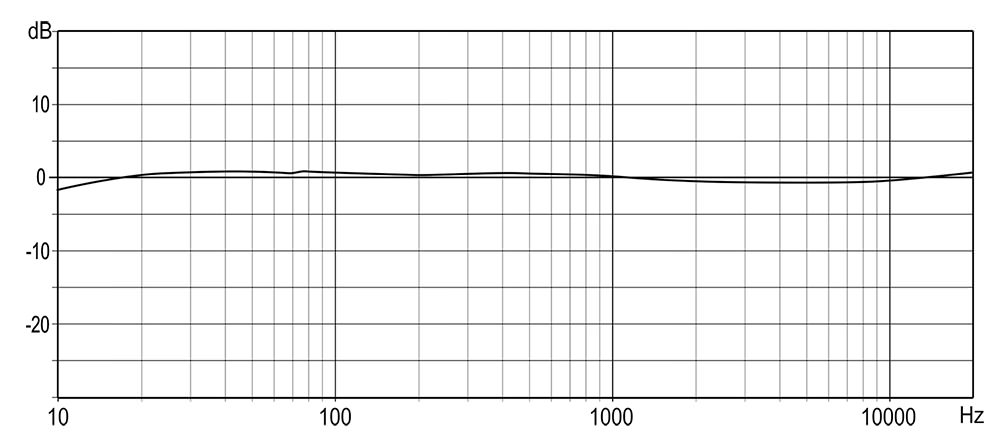




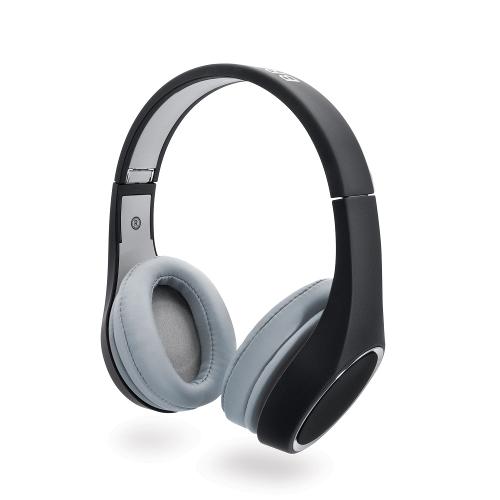















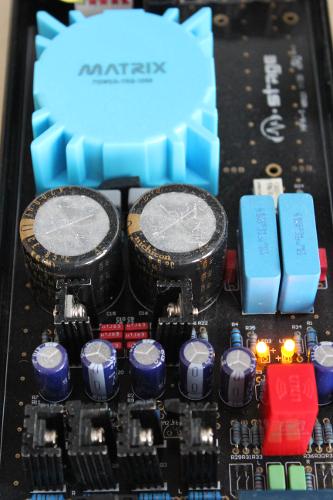

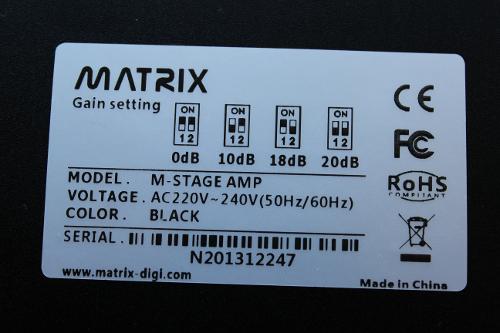

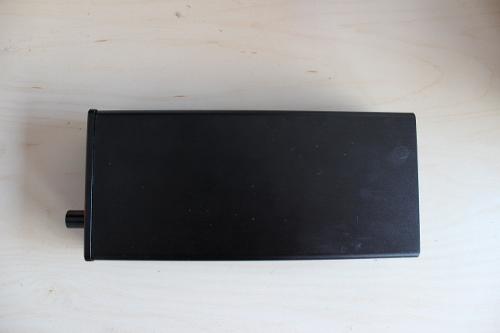
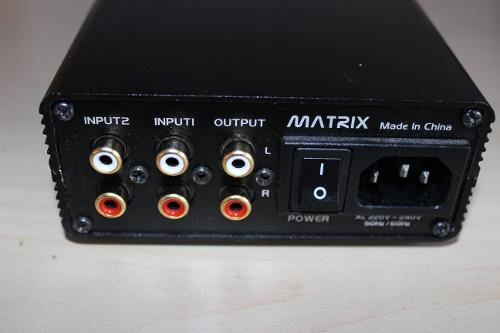
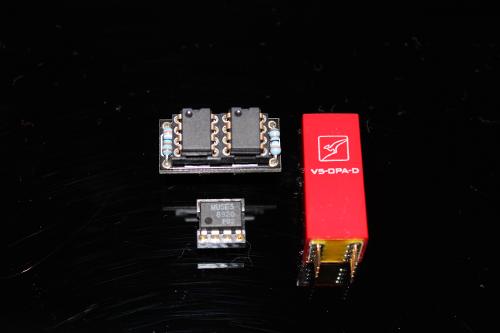
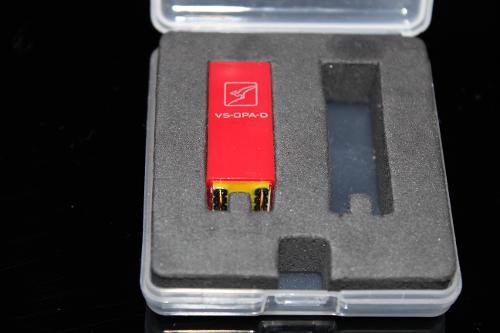






























































































 ⁉
⁉









































































When listening to the Rockets I don't really feel they lack in bass at all since they're full and lush in their nature but as you can see all of the IEM's in the comparison do have more rumble in the lowest bass so it does roll off earlier and steeper than the Havi's. Innerfeidelity has produced graphs of the Rockets IIRC so might be worth checking out. Please note that this was with the latest version of the Havi's which does have a bit more bass compared to the original ones. I'd say that anyone who enjoyes the Havi's will also like the Rockets and the fact thet they're easy to drive and seem to be very durable makes them an excellent "on the move" alternative to the B3's in my opinion.